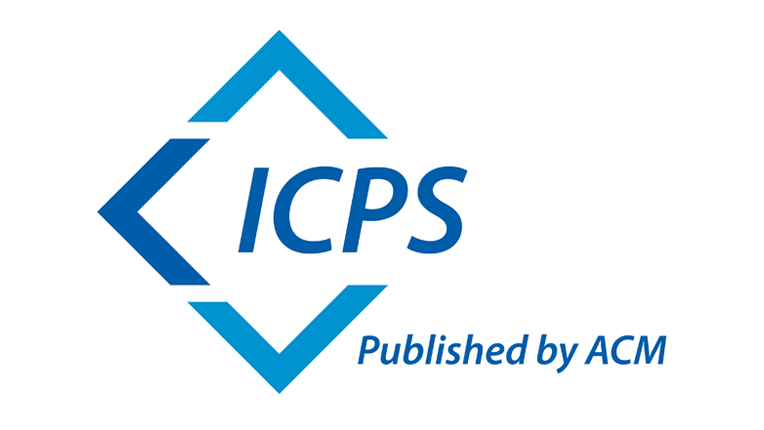Program
The schedule of the sessions themselves can be found directly below.
🏆 Best Paper Award
TOMURA: A Mountable Hand-shaped Interface for Versatile Interactions
🏆 Best Poster Award
First Bite/Chew: Distinguish Typical Allergic Food by Two IMUs
🏆 Best Demo Award
Conducting and Mitigating Portable Thermal Imaging Attacks on User Authentication using AI-driven Methods
Session 1: Haptic Feedback
| Time | Paper |
|---|---|
| 11:30 - 11:45 | Designing Interactive Shoes for Tactile Augmented Reality https://doi.org/10.1145/3582700.3582728 |
| 11:45 - 12:00 | GAuze-MIcrosuture-FICATION: Gamification in Microsuture training with real-time feedback https://doi.org/10.1145/3582700.3582704 |
| 12:00 - 12:15 | Standing Balance Improved by Electrical Muscle Stimulation to Popliteus Muscles https://doi.org/10.1145/3582700.3582711 |
| 12:15 - 12:30 | Tactile Vectors for Omnidirectional Arm Guidance https://doi.org/10.1145/3582700.3582701 |
| 12:30 - 12:45 | Coldness Presentation to Ventral Forearm using Electrical Stimulation with Elastic Gel and Anesthetic Cream https://doi.org/10.1145/3582700.3582713 |
| 12:45 - 13:00 | Q&A |
Session 2: Perception and Extended Reality
| Time | Paper |
|---|---|
| 14:15 - 14:30 | Virtual Omnibus Lecture: Investigating the Effects of Varying Lecturer Avatars as Environmental Context on Audience Memory https://doi.org/10.1145/3582700.3582709 |
| 14:30 - 14:45 | LocatAR: An AR Object Search Assistance System for a Shared Space https://doi.org/10.1145/3582700.3582712 |
| 14:45 - 15:00 | Generation of realistic facial animation of a CG avatar speaking a moraic language https://doi.org/10.1145/3582700.3582705 |
| 15:00 - 15:15 | Effect of Weight Adjustment in Virtual Co-embodiment During Collaborative Training https://doi.org/10.1145/3582700.3582703 |
| 15:15 - 15:25 | Workspace Scaling in Virtual Reality based Robot Teleoperation https://doi.org/10.1145/3582700.3582717 |
| 15:25 - 15:35 | Tablet Cutting Board: Tablet-based Knife-control Support System for Cookery Beginners https://doi.org/10.1145/3582700.3582708 |
| 15:35 - 15:45 | Challenges in Virtual Reality Studies: Ethics and Internal and External Validity https://doi.org/10.1145/3582700.3582716 |
| 15:45 - 16:00 | Q&A |
Session 3: Human Empowerment
| Time | Paper |
|---|---|
| 9:00 - 9:15 | Effects of Wearing Knee-tightening Devices and Presenting Shear Forces to the Knee on Redirected Walking https://doi.org/10.1145/3582700.3582720 |
| 9:15 - 9:30 | LUNAChair: Remote Wheelchair System Linking Users to Nearby People and Assistants https://doi.org/10.1145/3582700.3582714 |
| 9:30 - 9:45 | Visuospatial abilities and cervical spine range of motion improvement effects of a non-goal-oriented VR travel program at an older adults facility:A pilot randomized controlled trial https://doi.org/10.1145/3582700.3582715 |
| 9:45 - 10:00 | Exploration of Sonification Feedback for People with Visual Impairment to Use Ski Simulator https://doi.org/10.1145/3582700.3582702 |
| 10:00 - 10:15 | DecluttAR: An Interactive Visual Clutter Dimming System to Help Focus on Work https://doi.org/10.1145/3582700.3582718 |
| 10:15 - 10:30 | ShadowClones: an Interface to Maintain a Multiple Sense of Body-space Coordination in Multiple Visual Perspectives https://doi.org/10.1145/3582700.3582706 |
| 10:30 - 10:45 | Q&A |
Session 4: Intelligence Augmentation
| Time | Paper |
|---|---|
| 11:30 - 11:45 | AI Coach: A Motor Skill Training System using Motion Discrepancy Detection https://doi.org/10.1145/3582700.3582710 |
| 11:45 - 12:00 | CC-Glasses: Color Communication Support for People with Color Vision Deficiency Using Augmented Reality and Deep Learning https://doi.org/10.1145/3582700.3582707 |
| 12:00 - 12:15 | AIx speed: Playback Speed Optimization using Listening Comprehension of Speech Recognition Models https://doi.org/10.1145/3582700.3582722 |
| 12:15 - 12:30 | Exoskeleton for the Mind: Exploring Strategies Against Misinformation with a Metacognitive Agent https://doi.org/10.1145/3582700.3582725 |
| 12:30 - 12:45 | Investigating Effects of Facial Self-Similarity Levels on the Impression of Virtual Agents in Serious/Non-Serious Contexts https://doi.org/10.1145/3582700.3582721 |
| 12:45 - 13:00 | Q&A |
Session 5: Interfaces for the Body and Beyond
| Time | Paper |
|---|---|
| 14:15 - 14:30 | Affective Umbrella -- A Wearable System to Visualize Heart and Electrodermal Activity, towards Emotion Regulation through Somaesthetic Appreciation https://doi.org/10.1145/3582700.3582727 |
| 14:30 - 14:45 | TOMURA: A Mountable Hand-shaped Interface for Versatile Interactions https://doi.org/10.1145/3582700.3582719 |
| 14:45 - 15:00 | DUMask: A Discrete and Unobtrusive Mask-Based Interface for Facial Gestures https://doi.org/10.1145/3582700.3582726 |
| 15:00 - 15:15 | Dynamic Derm: Body Surface Deformation Display for Real-World Embodied Interactions https://doi.org/10.1145/3582700.3582723 |
| 15:15 - 15:30 | Human Coincident Robot: A Non-contact Surrounding Robot Sharing the Coordinate with a Human Inside https://doi.org/10.1145/3582700.3582724 |
| 15:30 - 15:45 | Q&A |
Behavior and Physiology-Aware Security User Interfaces
Abstract: Over the past years a global and highly professional cybercrime industry has established itself, making user-centred attacks an omnipresent threat for society. Companies, organisations, and individuals struggle to keep up and protect themselves effectively from an ever-growing number of sophisticated attack vectors. Reasons are, among others, a general lack of awareness and understanding of such threats, inherently complex and difficult-to-understand security and privacy mechanisms, and users struggling to habituate secure behavior in cyber space. Yet, humans are not as helpless as it seems, as many examples of secure behavior in the real world demonstrate. We naturally lock doors, we place valuables in safes or lockers, and we take small detour at night rather than walking through dark areas and parks. Based on examples from our research, I will demonstrate how such natural behavior can be supported in the digital world through the design and development of security user interfaces that are aware of human behavior and physiology. I will showcase how technologies for human augmentation allow a detailed understanding on humans’ responses to security-related situations to be obtained and leveraged so as to target opportune moments, enable contextualised means for protection, and increase users’ security literacy.

Florian Alt
Short Bio: Florian Alt is a full professor of Usable Security and Privacy at the Research Institute for Cyber Defence (CODE) in Munich. In his work, he is interested in designing secure and privacy-preserving systems that naturally blend with the way in which users interact with computing devices. Florian’s research focuses on investigating users’ behavior in security contexts, on creating and enhancing security and privacy mechanisms based on users’ behavior and physiology, and on understanding as well as mitigating threats emerging from novel ubiquitous technologies. Specific areas of application are Mixed Reality, Smart Homes, and Social Engineering. Florian holds a diploma in Media Informatics from LMU Munich and a Ph.D. in Human-Computer Interaction from the University of Stuttgart.



